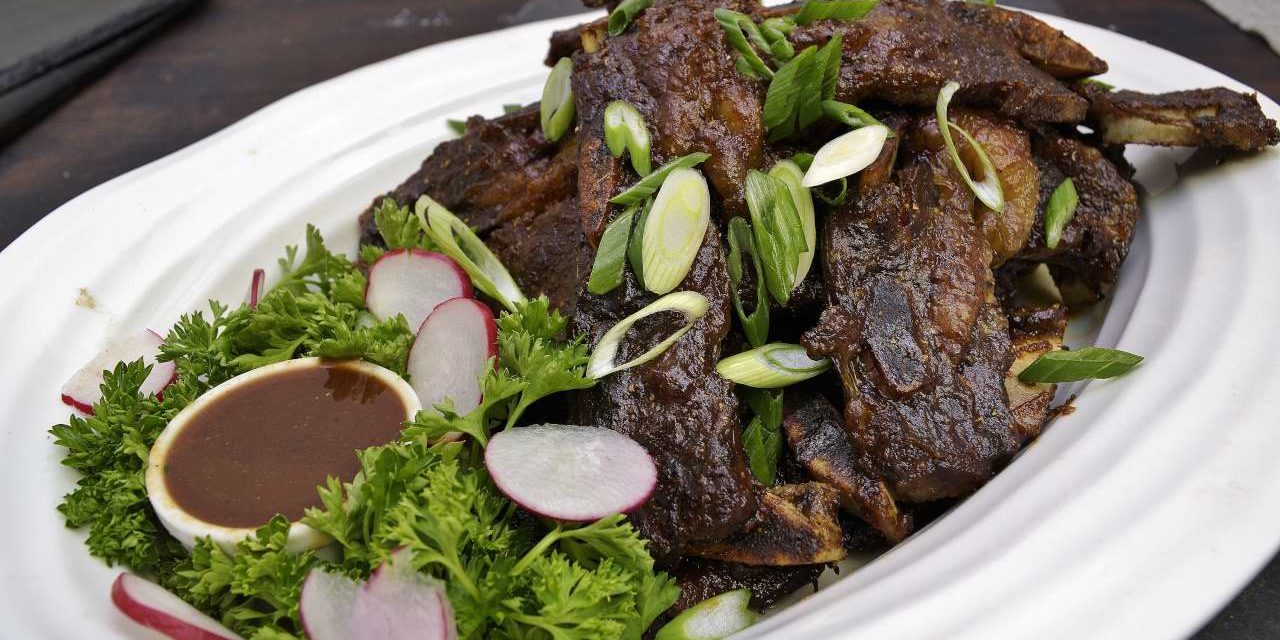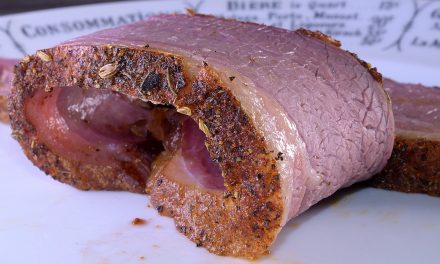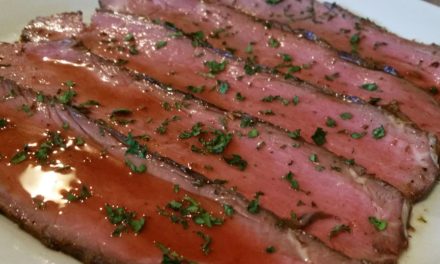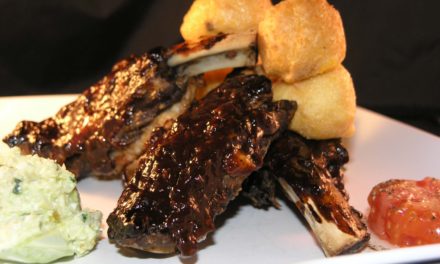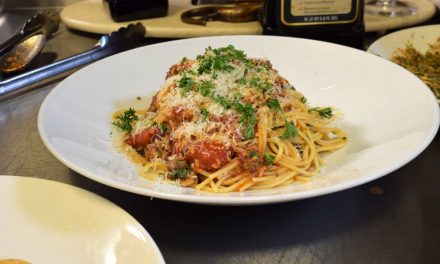We were as children
As recently as the 1960’s, nobody wanted to advertise or even admit that a good restaurant might have an American chef instead of a French or at least “Continental” one. The record of dedicated American cooking is shorter than our European counterparts and imported culinarians viewed and treated us as wide-eyed and incompetent novices. Even now, Americans retain an inferiority complex about our culinary traditions.
Things like Hamburgers and hot dogs (Frankfurters) were anxiously romanticized with vaguely foreign names. The French get credit for Fries, and when beef tenderloin appears on a menu, it is still labeled as a “Filet,” “Chateaubriand,” or at least a “Tournedo.”
The agonizing birth of the Anglicized chef
Once the 70’s rolled around, Alice Waters and other Americans were finally able to achieve some degree of culinary credibility. Of course, we were still very sycophantic towards French cuisine. True to our elitist aspirations, we took a snobbishly dim view of American fare. Most of us peppered our commentary with Frenchified terminology, frequently mispronounced.
Chez Panisse et al might offer pizza in the upstairs bistro, but it wouldn’t have Canadian Bacon and Pineapple on it, good heavens, no. Arugula and Gorgonzola, or maybe Mission Figs and walnuts, more likely. One wouldn’t dare ask for extra cheese or a thick crust without risking unceremonious banishment to Shattuck Avenue. I have no idea what would have happened if you asked for a bottle of ketchup in Chez Panisse circa 1975, but I’m pretty sure it wouldn’t end well.
But where would we be without ketchup?
Ketchup is one of those things. We imagine it to be of English origin, but the word itself is an appropriation from languages spoken in colonial Asia during the “Golden Age” of the British Empire. May it rest in peace.
If you visit one of the new spate of Asian markets, you will see a slew of bottles labeled as “Kecap” or some similar spelling–usually a dark and thick sauce intended to be served at table. Leave it to the English to add tomatoes to it. Tamarind with its acidic pastiness was not so common in Lincolnshire as it was in Singapore.
Still, when I mention ketchup as an ingredient in a post on our FaceBook group, someone will slyly ask me if I make my own, as if to do otherwise would be somehow selling out to the crass commercialism of of pre-packaged convenience foods. The answer is easy, though. I can make my own ketchup. I have made my own ketchup. I have taught people how to make ketchup. I have been PAID to make ketchup. And if you start with the most wholesome, minimally processed ingredients and devote your effort and patience without reservation, your end result will come out just like Heinz 57.
It better had. If it doesn’t, anybody who tastes it will say “That’s not REAL ketchup. It’s not bad, but it’s not AUTHENTIC.” Better to focus your energy on something that might actually make a difference.
Lest we forget
All is not lost, and Americans are not without a unique culinary tradition. We do have our own cuisine, albeit a plebian one. Barbecue. BBQ. Americans did not invent barbecue per se, cavemen were cooking over coals as soon as they discovered fire. But we have developed a model that you really don’t see anywhere else.
Cornbread, beans, coleslaw, mac’n’cheese and numerous other side dishes must surely be encrypted into our DNA by now. The memories of their scents and flavors come alive whenever we ponder smoked ribs, much less see or smell a Weber nearby. Rather than being served on fine china in repose on starched white tablecloths, classic, authentic barbecue is more likely to be served in faux-wicker baskets insulated with wax paper.
An identity not to be mistaken for another
One can expect lots of iced tea-filled styrofoam containers, plastic or paper portion cups and doggie bags. Metal dispensers stuffed with minimal paper napkins adorn the center of the table instead of a vase of fresh cut Gladiolas. No matter. It is ours, and ours alone.
There are myriad forms of sauces that go with barbecue, distinguished regionally in many cases. Some practitioners eschew the sauces entirely, manifesting their own quasi-elitist preferences . Even so, if you are in a strange town and you order BBQ, you are unlikely to be surprised that good old fashioned ketchup has worked its way into the coatings or dips provided.
Worcestershire sauce is another major player, again, as tribute to the era of British colonialism and the familiarization of dried anchovies and tamarind to the otherwise spice deprived English palate.
Enter the smoking Dragon
And so it was, I found myself to be in the possession of some flanken cut beef short ribs. The thin sliced bony strips are popular in Korean Galbi and some kosher stylings as well. They are more commonly seen as the thicker “English cut,” but when my delivery came, this is what it was. This made me think of somehow attempting to syzygize the East with the West, like the Butterfield Blues Band tried to do in the late 60’s. I looked for my sitar for a while, it’s got to be around here somewhere.
I almost forgot.
Ingredients:
Serves 4-6
Level of difficulty–1.5
Flanken style beef shortribs, 4 lbs./1.8 Kg.
Powdered egg white (or fresh), as needed. About two each if you use fresh.
Kosher salt, 2 tsp/lb of meat.
Ground black pepper, little bit.
Radishes, 2 each, sliced.
Parsley, who measures parsley?
Scallions/green onions/ramps, 2 each, sliced thin on the bias.
One of the great things about sous vide is it doesn’t matter if the short ribs are cut thin or thick. They are going to take pretty much the same time to cook, so I set the controls for
140 F/60 C for 60 hours,
and that was about right. This is a fairly standardized model for this high collagen cut, fat or skinny, bone-in or boneless, that’s about what it’s going to take…
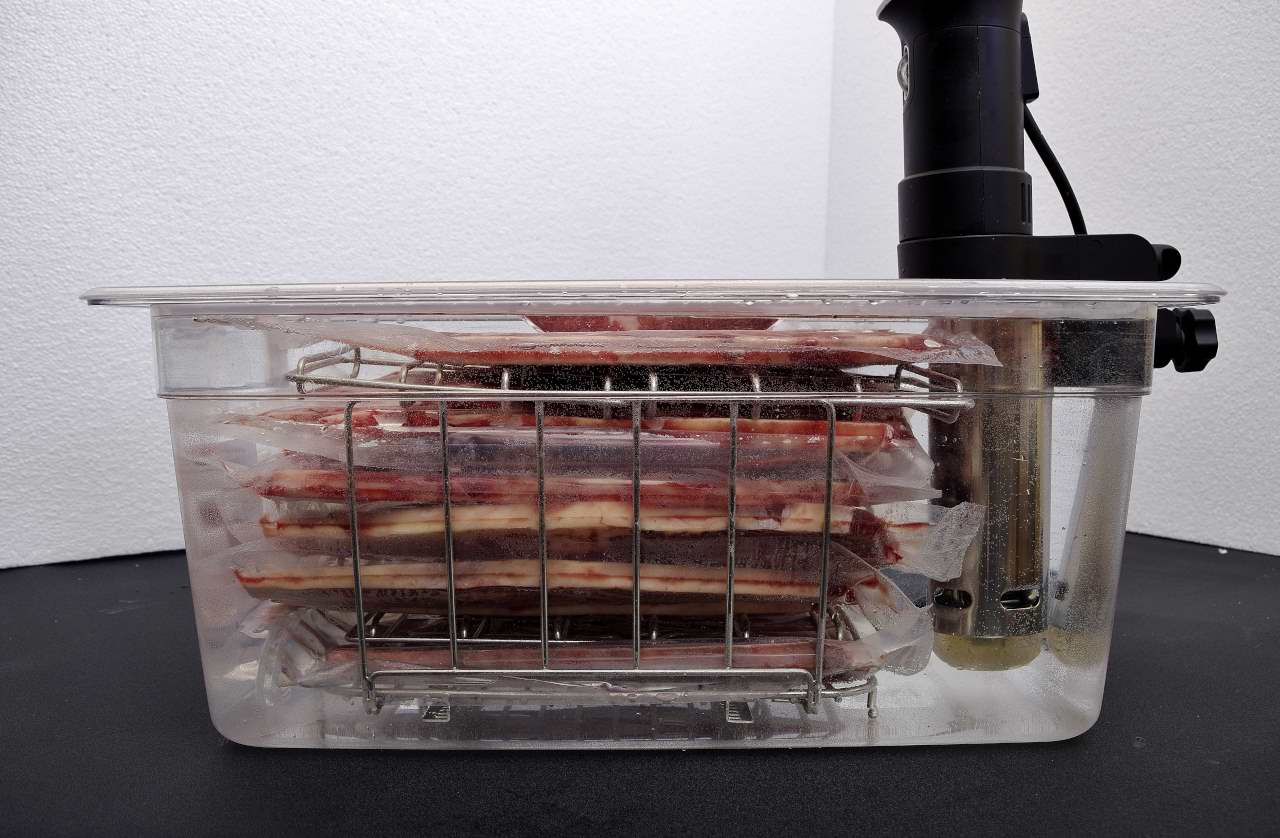
Flat as they were, they were too big to stand up in the Lipavi rack, so I laid them on their sides and used the inserts to separate them. Once they were done, I shocked them in iced water until they hit 70 F/21 C, and then refrigerated them @40 F/4 C. Kept in this state, if you don’t crack the bag, pasteurized proteins will keep in the fridge for a long, long time, like an unopened carton of milk.
I also cured/corned some of the short ribs, HERE is the link to that article…
I remembered being trolled about making my own ketchup, and I had an open can of tomato paste. I decided to set off on a fusion escapade.
Garam Masala-Cue Sauce
Garam Masala is a loosely standardized combination of Indian spices that include cardamom, ginger, garlic, coriander, allspice, cinnamon and all those other aromatic spices that you pick up in Indian restaurants.
One note: Many recipes for Garam Masala instruct you to toast the seeds in the pan before proceeding with the recipe, but I don’t. Why not? Well, toasting the spices does fill the room with a nice aroma. But aroma is not infinite, it is particulate. Once you release it the first time, there will be less or none in the final product.
I haven’t really settled on the name for the sauce, but there’s no hurry…here are the ingredients:
Garam masala, dry—2 oz/60 g (dry weight).
Vinegar, 1 cup/200 ml.
Water, 2 cups/400 ml.
Dried onion, 3 T.
Dried garlic, 3 T.
Corn syrup, 1 cup/200 ml.
Tomato paste, 12 oz/300 g, (2 cans).
Worcestershire sauce, 1 cup/200 ml.
Sugar, 1 cup/200 ml.
3 T Kosher salt.
Vegetable oil, 1 cup/200 ml.
Procedure:
Heat your sous vide bath to
183 F/84 C.
Grind the Garam Masala in a generic blender until it is as fine as possible–the finer it gets, the more flavor it will have and the less likely it will be to get stuck between your teeth. It is difficult to strain out, so I leave it in. Bring the water and the vinegar to a rolling boil and add it to the running blender in a steady stream, CAREFULLY, and continue blending–use the lid, but leave the hole open so it doesn’t erupt like a volcano. Add the rest of the ingredients and blend as long as you can bear the racket. Pulse it once in a while, but again, watch out for minor eruptions.
Stage into a one gallon Ziploc Freezer Bag, but do not seal. I like to put the empty bag in a 2 quart pitcher and fold the opening over the sides–this makes it easy to pour the sauce into the bag. Lower the bag into the bath, and drape the opening over the edge of the container. The Lipavi lid will hold it in place, make sure the sauce itself is fully submerged. Process for 2 hours, return to the blender and blend again. Taste for salt. After I do this, I return the sauce to the bag (or a fresh one) and seal it–then I shock it in ice water until it hits 70 F/21 C. Only then do I refrigerate it. The shocking process prevents it from heating the inside of your refrigerator.
NNNNNNNNNNNNEXT
After processing, remove the ribs from the bags and spread them out on a sheet pan.
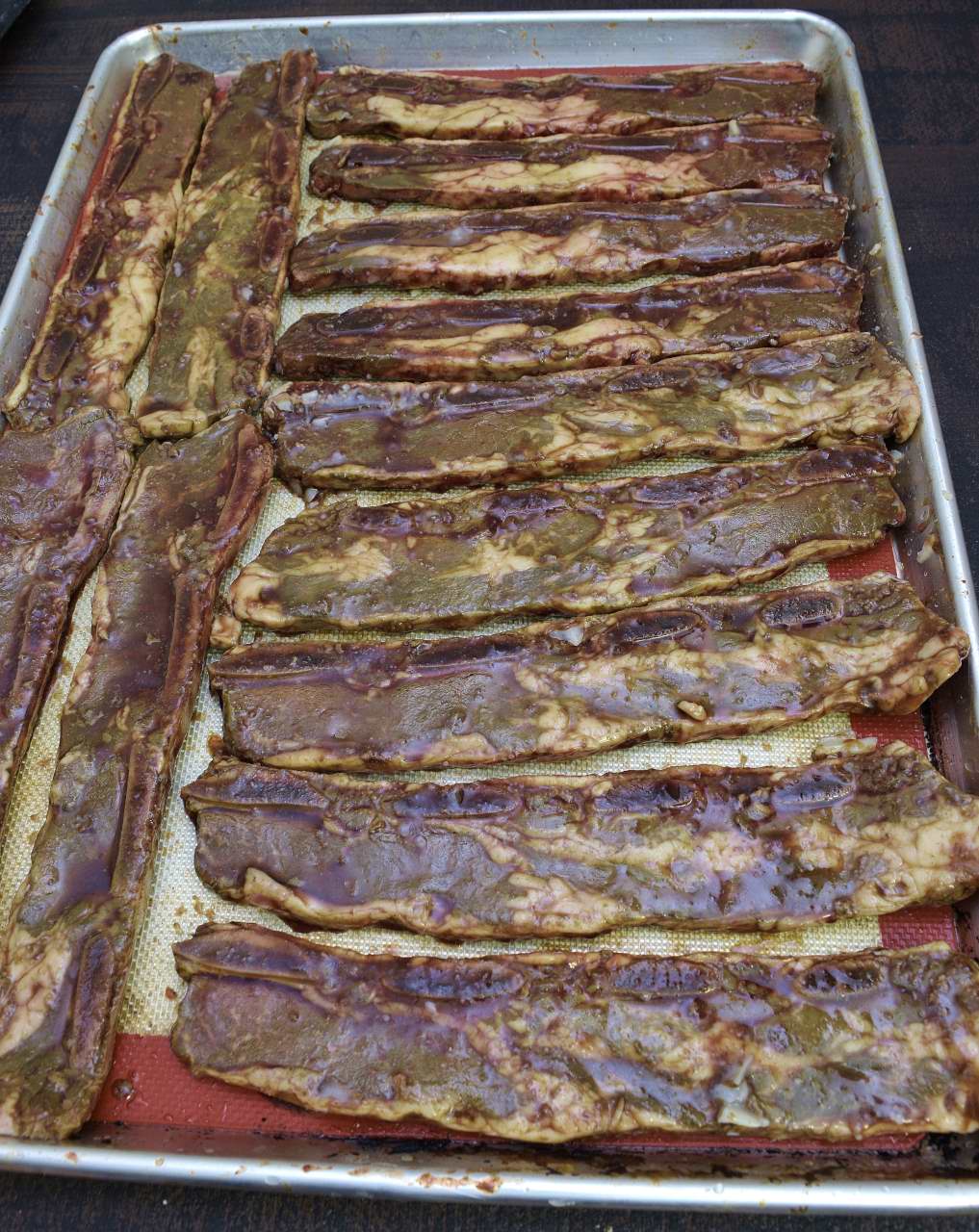
Pat dry with a paper towel.
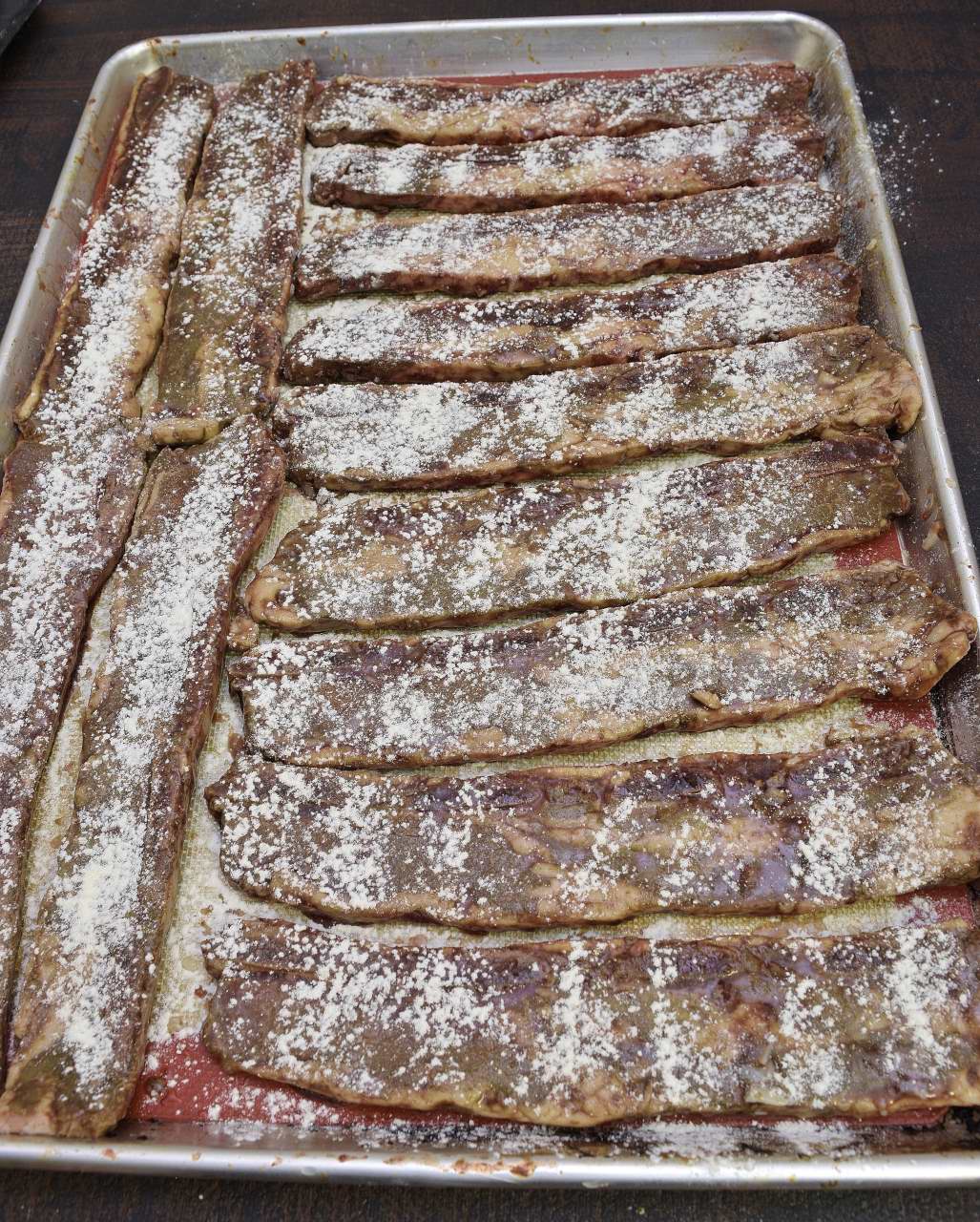
Sift some powdered egg white over the top as shown. You can use fresh egg white and a pastry brush if you prefer, but I have become enamored of powdered, pasteurized egg white for this and a few other applications. It’s great for making meringue. It also makes the seasonings cling to the short ribs.
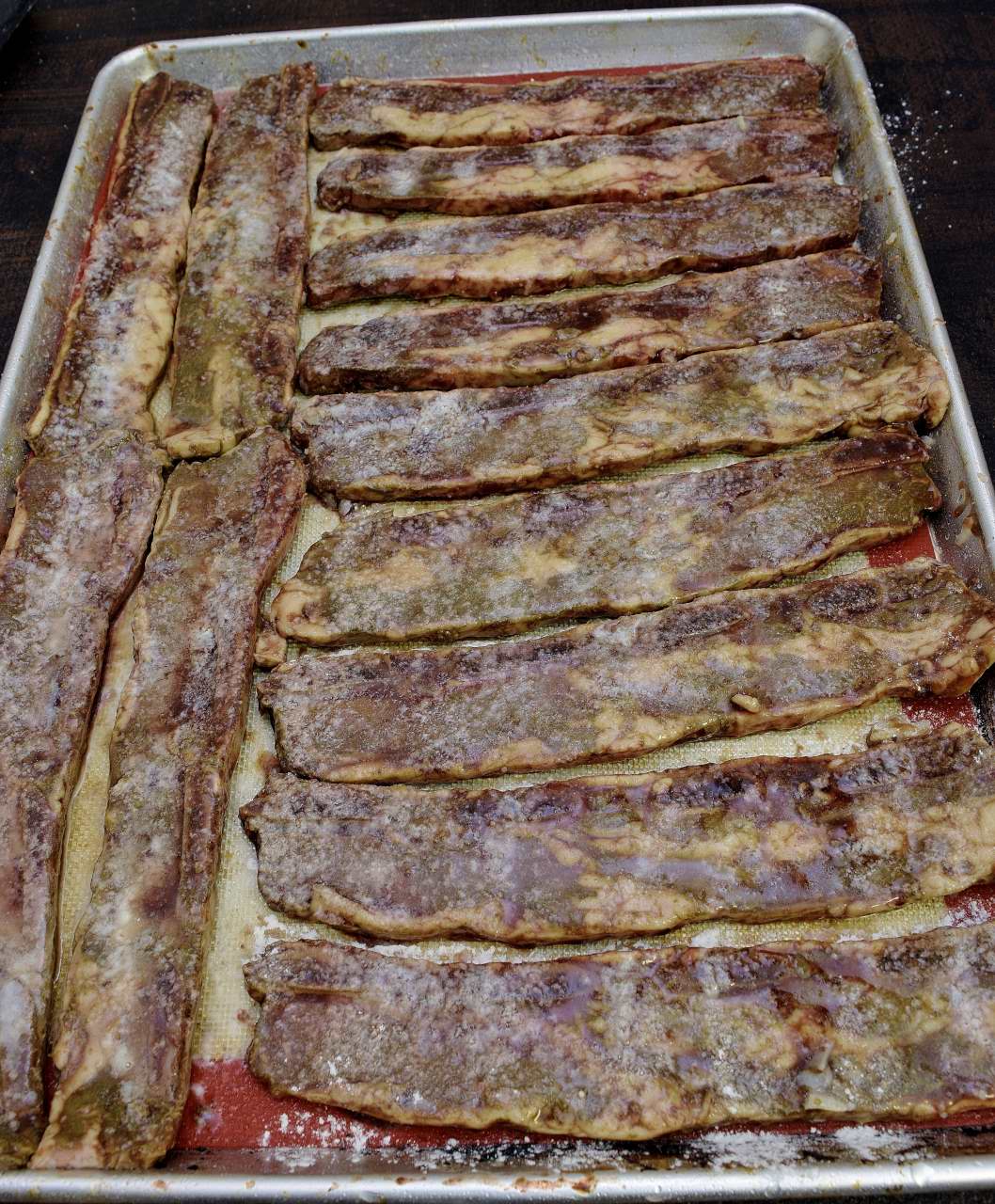
Use a spray bottle to apply a fine mist of water to the egg whites, which will dissolve and reconstitute.
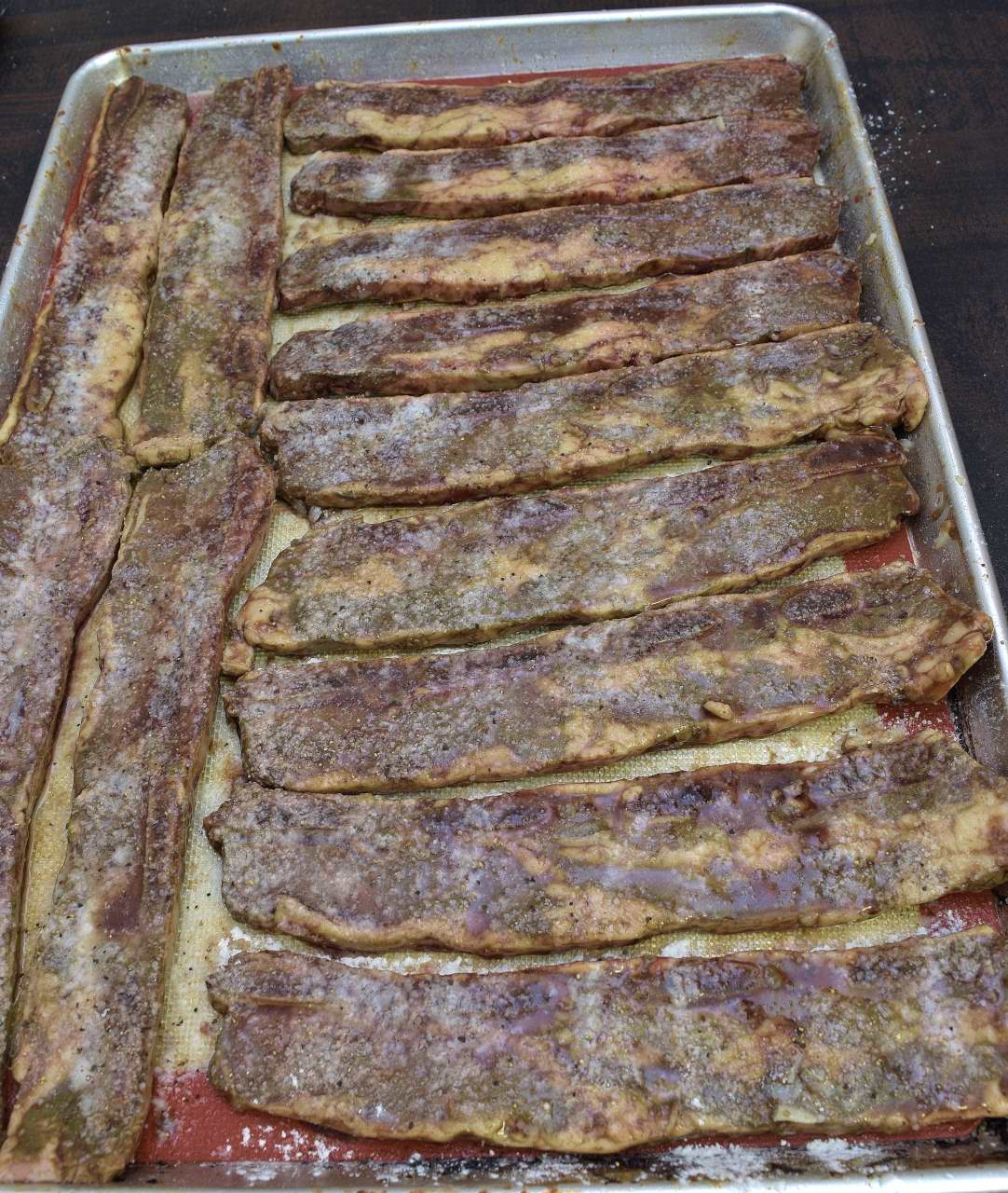
Sprinkle with kosher salt and ground black pepper.
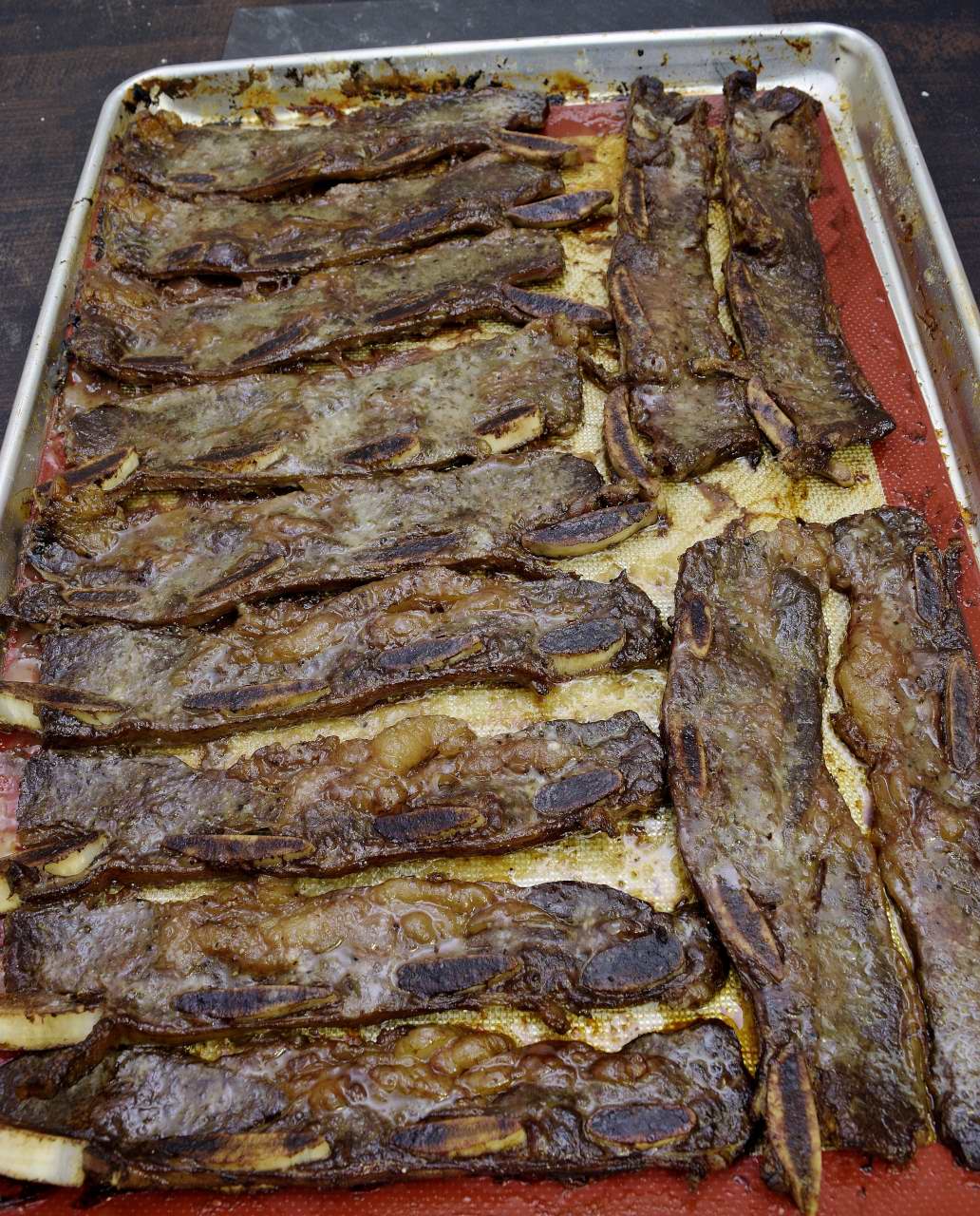
Roast at 350 F/176 CX1 hour.
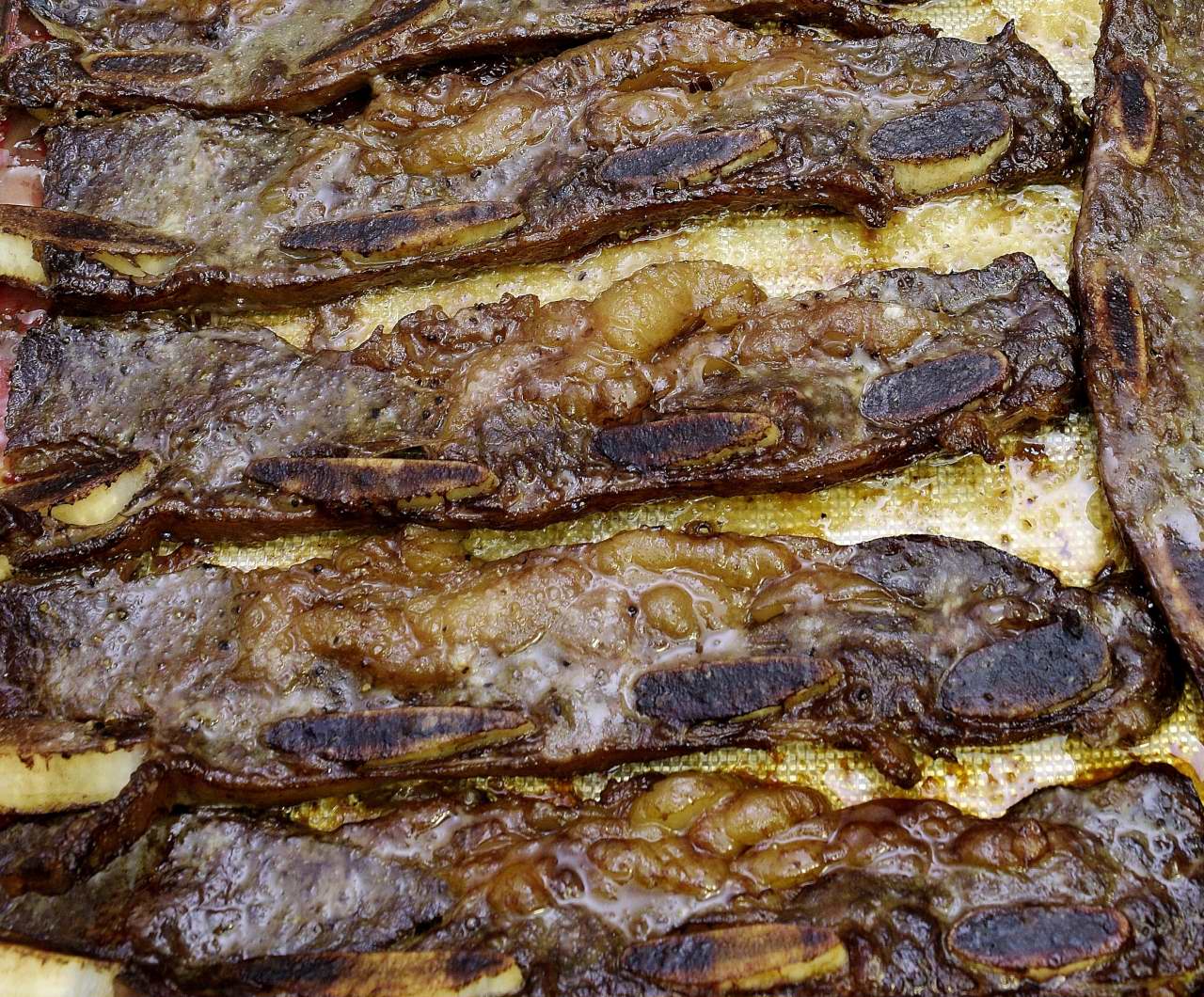
Remove the pan from the oven and you will see that the fat has rendered out of the ribs–sous vide temperatures do not render fat.
Tilt the pan so the fat runs down to one end and use paper towels to absorb it.
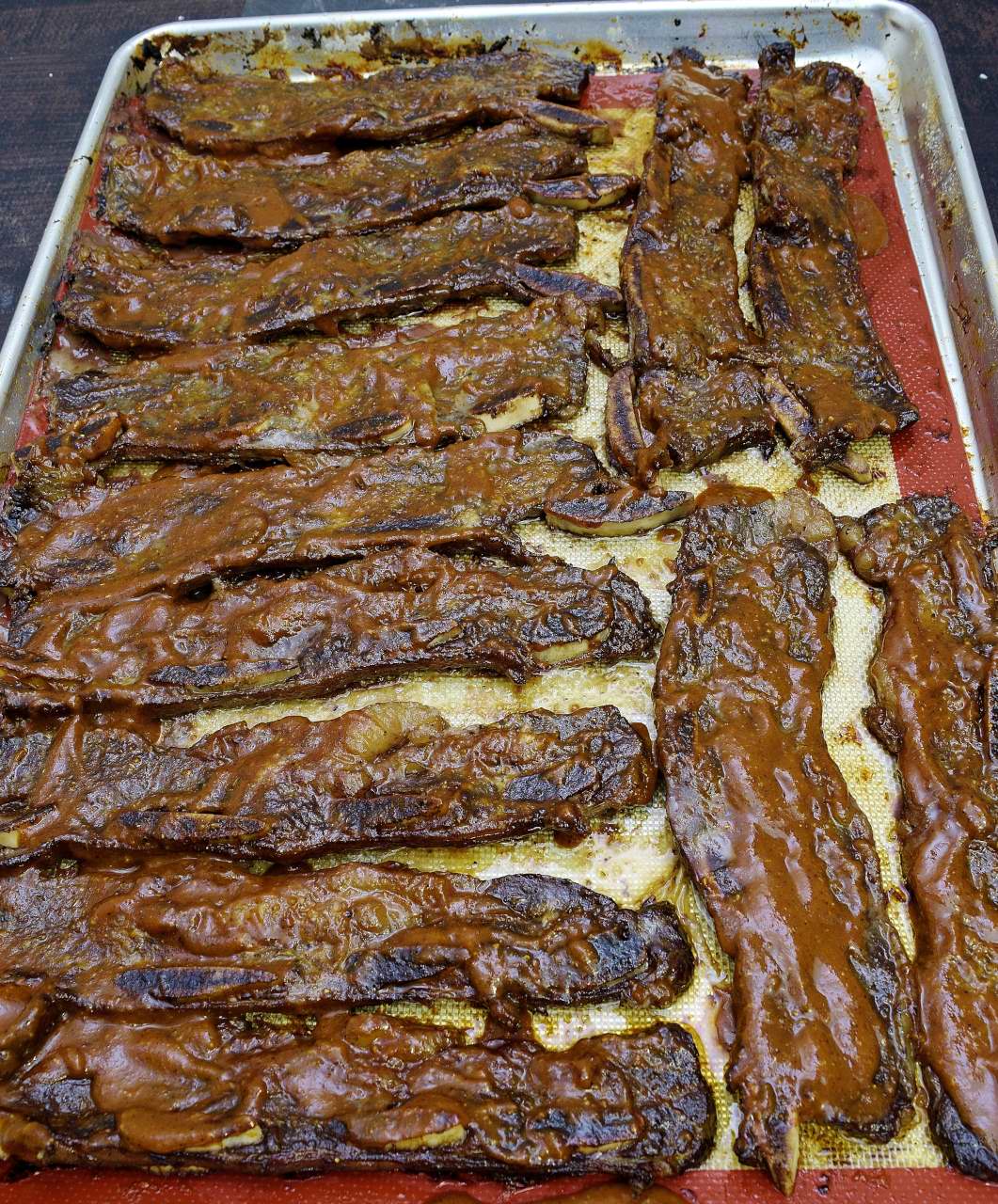
Use a pastry brush or otherwise smear the ribs with the Masala-Cue sauce. Return to the oven for 15 minutes at 375 F/176 C. Remove from the oven, give them a minute to cool off, and arrange on a plate. Sprinkle with the scallions and garnish with some sliced radishes. For some reason, people will eat radishes if you put them on the same plate as barbecue. Another great thing about Q. Hot, cold, room temperature–all good.
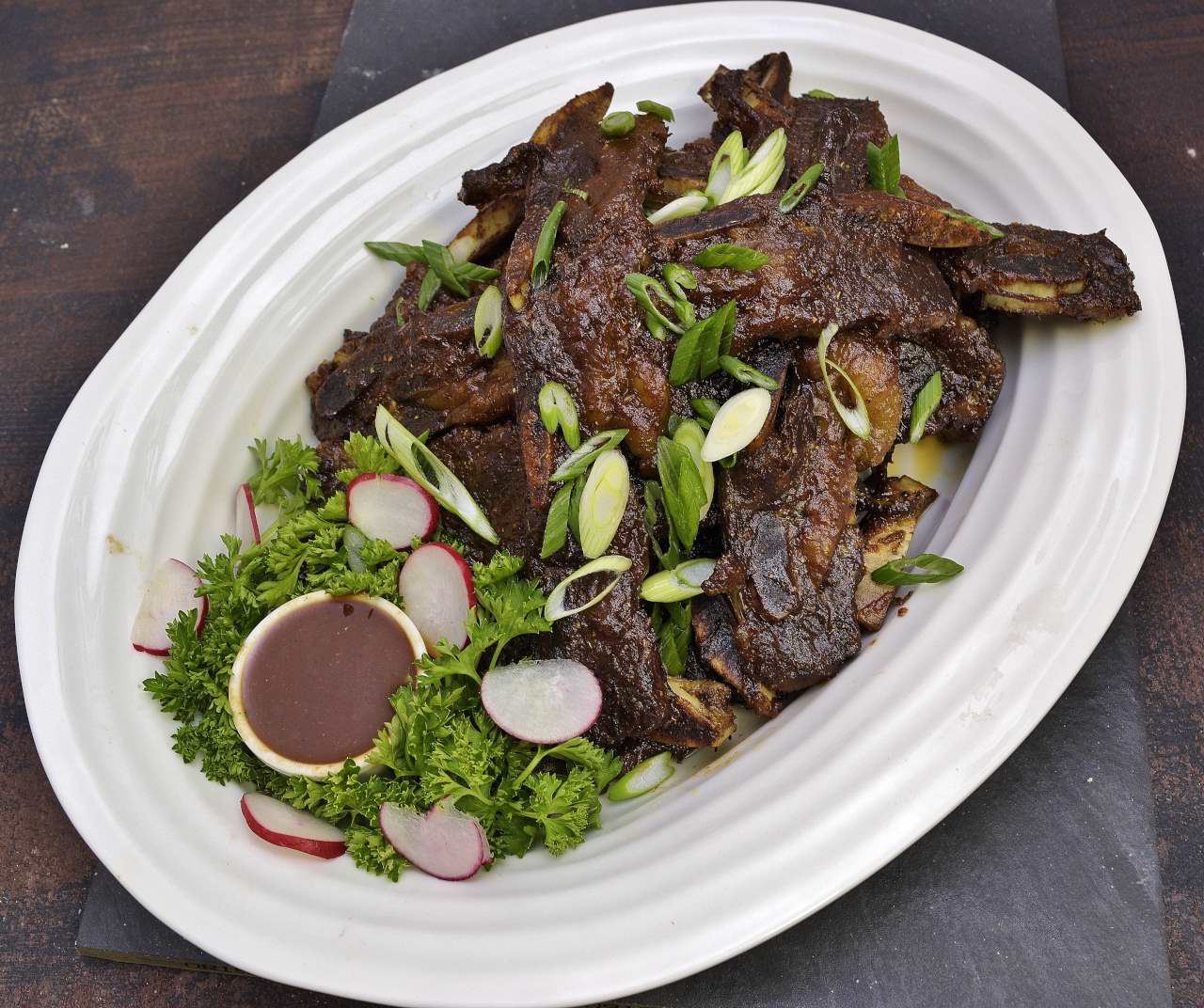
A little cup of sauce, I didn’t have any plastic, so I used actual dishes.
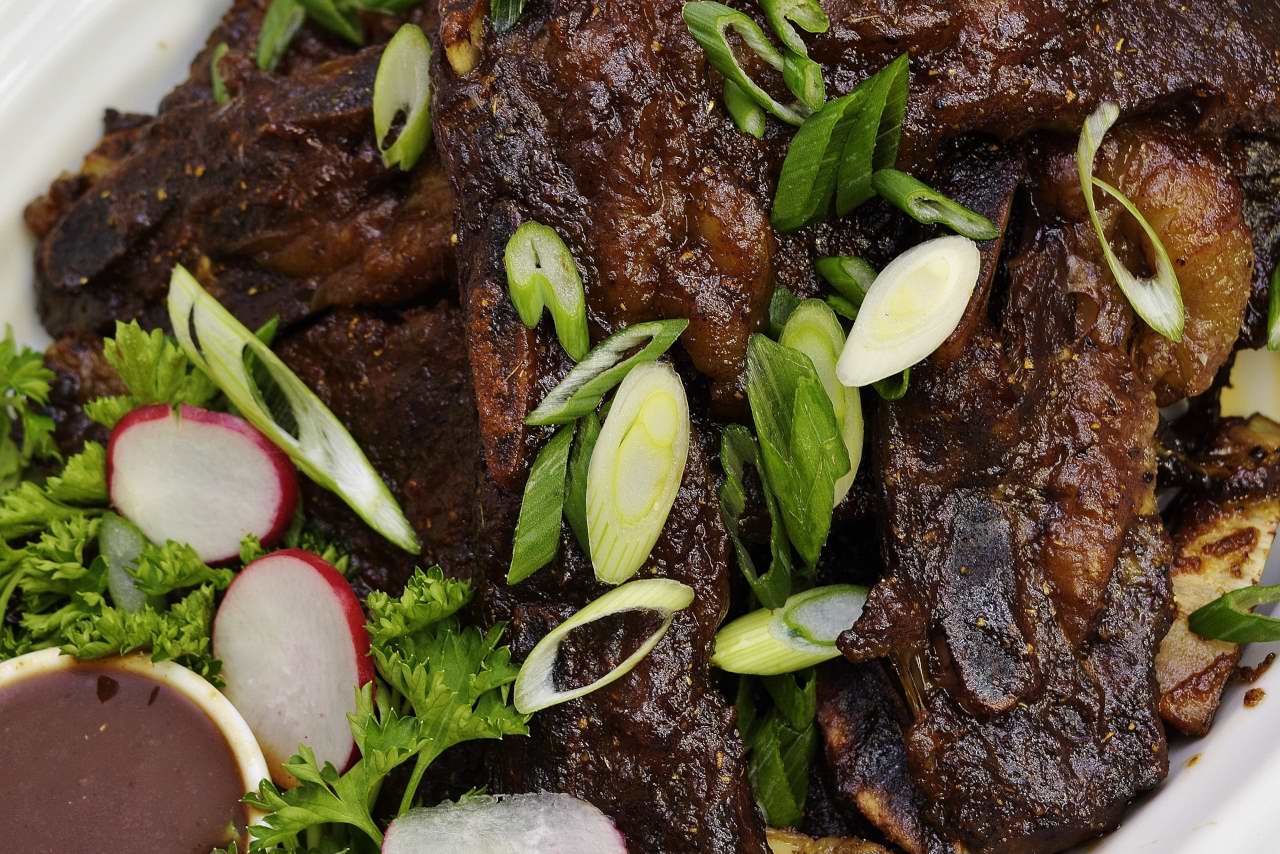
You will never see this in a French restaurant.
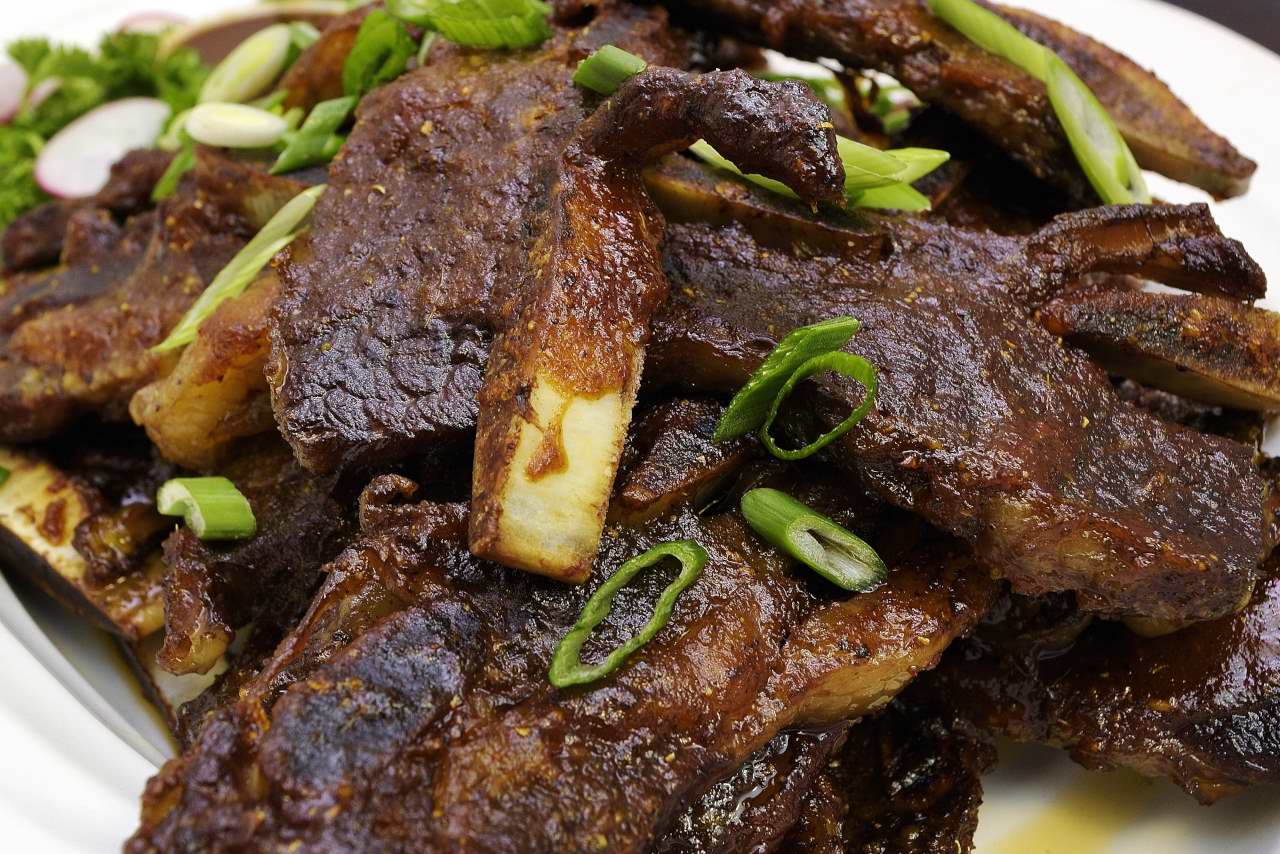
Boney, crispy, tart, sweet wonderfulness.
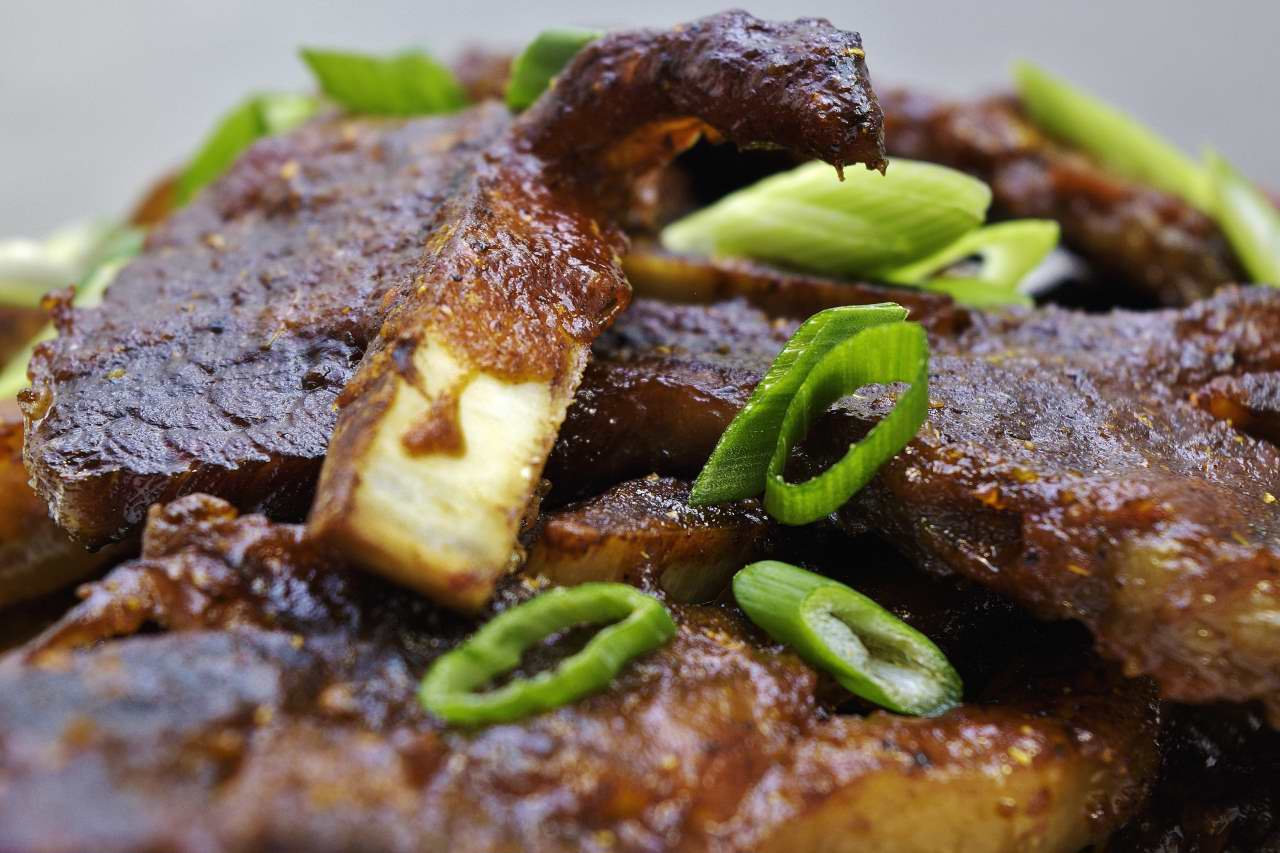
Now would you look at that?

